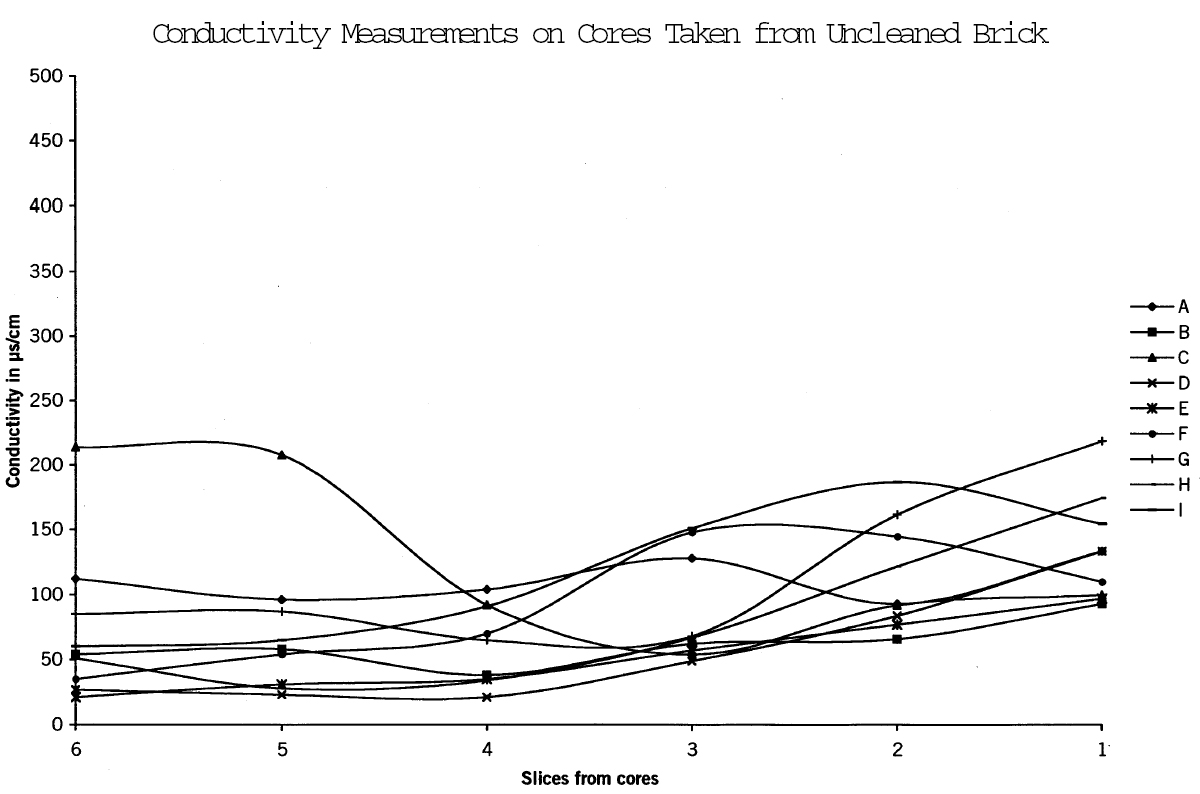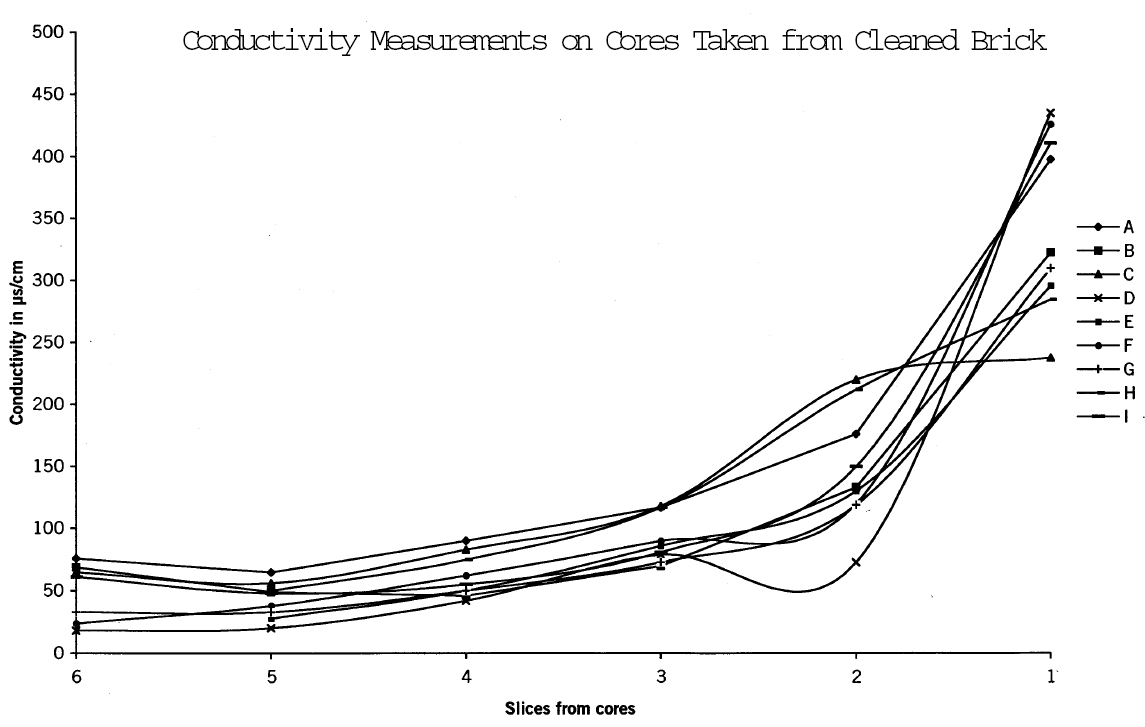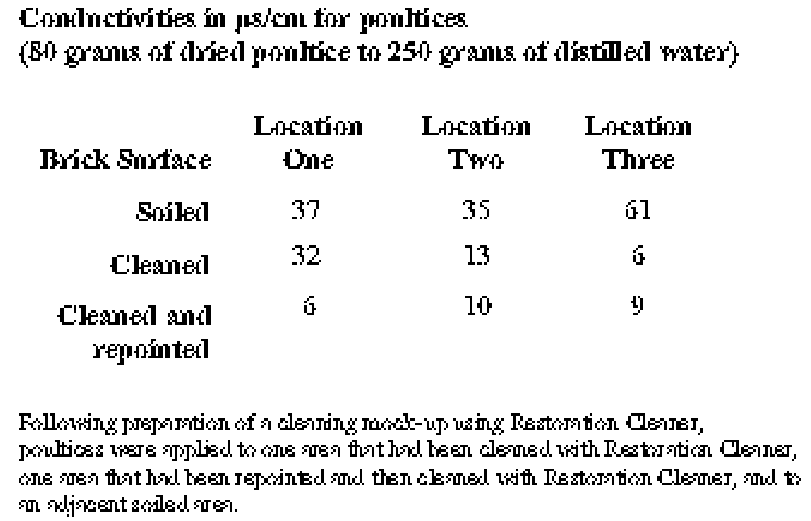EVALUATION OF CLEANING METHODS FOR THE EXTERIOR BRICK AT THE BROOKLYN HISTORICAL SOCIETYCLAUDIA KAVENAGH, & GEORGE WHEELER
5 DISCUSSIONThe Brooklyn Historical Society's building possesses two inherent “vices” that have contributed to its current condition: highly absorptive brick and mortars, both setting and pointing, which contain gypsum as a result of their original formulation. Because of these conditions, during a rain event, gypsum in the mortar is dissolved and the calcium sulfate solution is drawn into the highly absorptive brick. During drying, the solution is carried toward the surface of the brick, where gypsum reforms. The fact that the deposits follow the perimeter of the brick face supports this finding. In fact, the damage to the brick is particularly severe in those parts of the building where water management systems, such as gutters and leaders, have not been maintained. The building has also acquired the “vice” of soiling. This soiling disrupts the intended appearance of the building's surfaces and may also contribute to the deterioration of the brick. Particulates in the soiling block pores, and hydrocarbons in the soiling make the brick surfaces somewhat hydrophobic. These conditions are confirmed by the low capillary water uptake of soiled bricks in comparison to unweathered and unsoiled brick surfaces. These soiled surfaces can trap solutions of calcium sulfate inside the brick. Upon drying, gypsum crystallizes and damages the brick. For these reasons—both aesthetic and materials science—the cleaning of the building was entertained and a testing program carried out.
Due to the scale of the project and the difficulties often encountered in obtaining uniform compositions of nonproprietary cleaning materials when complex on-site mixing is required, only proprietary cleaners were tested. Of these, only Bac2Nu, an ammonium bifluoride–based cleaner, and Restoration Cleaner, a hydrofluoric acid–based cleaner, were effective in removing soiling from the brick. The Bac2Nu-cleaned brick exhibited a somewhat disfiguring white haze on the surfaces. Absorption testing demonstrated that the brick is indeed highly absorptive and that brick cleaned with Bac2Nu and Restoration Cleaner have an absorption rate similar to unsoiled and unweathered brick. Cross sections of cleaned and uncleaned brick clearly demonstrated that brick surfaces are smoother after cleaning with the HF-based Restoration Cleaner. Although the smoother surface was achieved because of small losses of material from the bricks, comparison of cross sections of brick cleaned with Restoration Cleaner with unweathered and unsoiled brick surfaces suggests that cleaning with the HF-based product results in a surface similar to the original surface of the brick. This smoother surface could result in a lower rate of resoiling and, therefore, less frequent cleaning.
Finally, there is the influence of cleaning on the gypsum-containing mortars. Conductivity testing showed that, unless the brick is repointed first, cleaning concentrates more gypsum at surfaces of the brick, and, therefore, increases the potential for damage to the brick. To reduce this risk, it was decided to remove existing pointing and to repoint the entire building with a lime-cement-sand–based mortar prior to cleaning. This repointing achieves two other desirable goals: (1) gaps left by missing pointing are now filled, thereby eliminating water infiltration during cleaning; (2) gypsum in the original pointing mortar is now removed, and the risk of future damage to the brick is reduced. |



